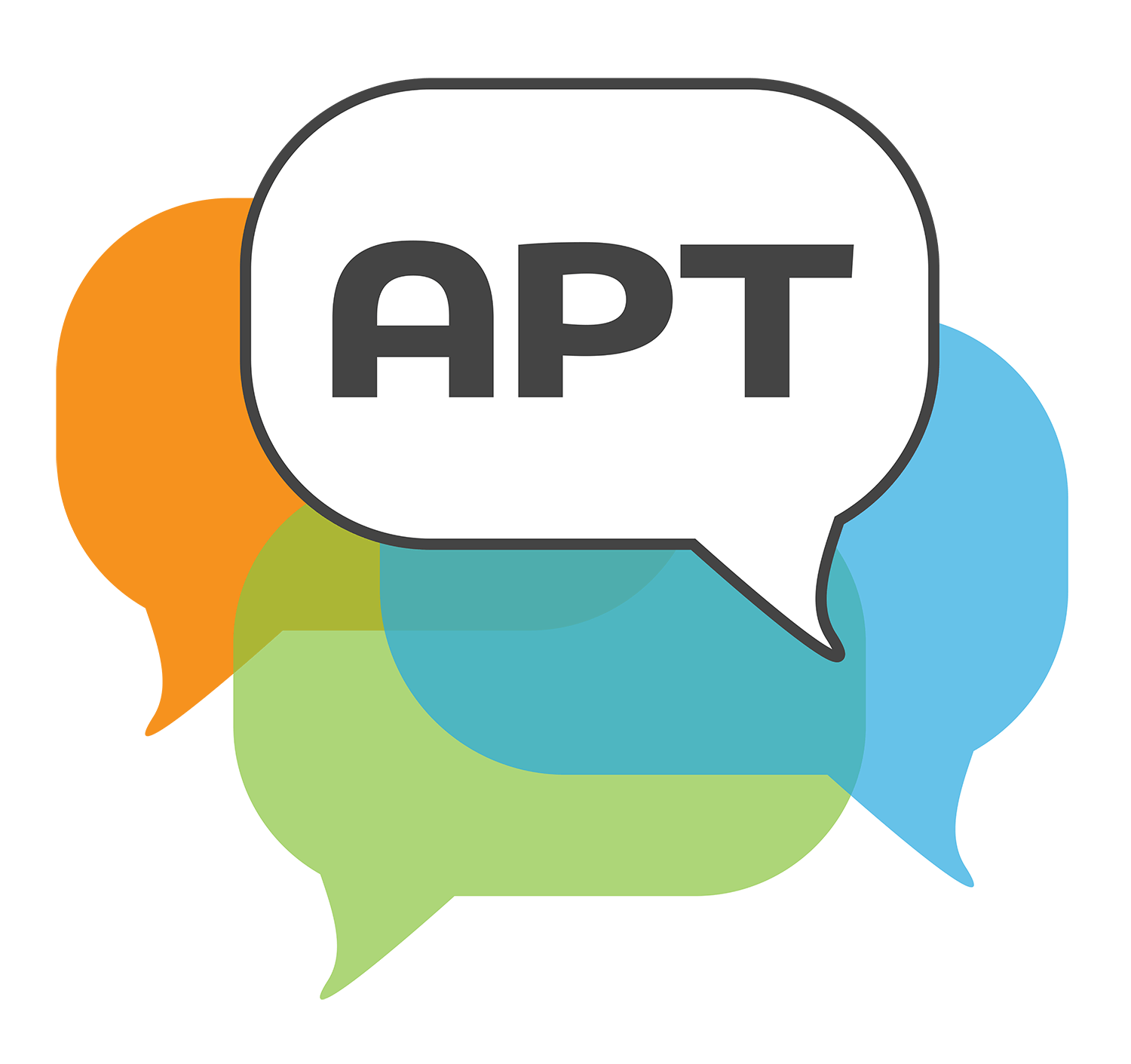Getting Started
Common Challenges
When a teacher is new to classroom discussion, the sources of uncertainty are many. It may feel like a major challenge for a variety of reasons:
What if my students can’t do discussion?
It is not surprising that students don’t do APT very well to begin with – most of their schooling has focused their attention on getting the right answer rather than displaying their thinking through talk. So, at the beginning of the year very few students, in any grade, are skilled in APT. But practice working on authentic tasks with peers, and teacher questions that push their thinking, will soon bear fruit.
Consider this lively discussion among 2nd graders working on a word sort. You’ll see students explain their grouping decisions (double consonants, things you do with your hands, things that are annoying). The concrete examples provided by these young students demonstrate their ability to provide evidence of their thinking and reason together.
How do I find the time to do discussion?
Teachers are tasked with covering a lot of material, and taking time out for discussion may seem like a luxury. Even if we acknowledge the many advantages of discussion, we have to justify its place in the curriculum.
First, it is important to stipulate that even 5 or 10 minutes a day of classroom discussion is more than most students have access to. Brief, time-limited discussions are effective in sending the key message that students’ voices are welcomed, that learning is valued over knowing, and that there are some topics for which no one is an expert.
Second, effective deployment of discussion can be a time saver if it motivates student interest and scaffolds independent learning. For example, rather than listening to a 40-minute lecture on the Pharaohs and their pyramids, participating in a 5-minute classroom discussion about whether investing in such a huge project was justifiable can generate open-ended questions that students can then pursue with readings or research in small groups. They are likely to learn and remember more information if they have actively searched for the answers, than if the answers were just handed to them.
STARTING SMALL
While a feature of fully engaged student discussions is indeed that no one wants to stop talking, their length can be managed by the teacher (set a limit before starting) and even brief discussions keep students alert and engaged. The key question about time management is whether the discussion is contributing more to student learning than the alternative activity – filling in worksheets, listening to a lecture, reading silently – would provide. Certainly there are more efficient ways to cover a lot of material. But do those alternatives produce more uptake of the material?
In this second grade classroom, the teacher is reading a story to the class to build comprehension and language skills. After reviewing the previous day’s reading, she reads a couple of pages, then stops at a high point and asks (03:56) “What has happened so far in this story?” There are no responses from anyone in the group, so she says “(04:07) Turn to your partner.” It takes only 73 seconds of small group discussion to stimulate a lively follow-up conversation in which the children volunteered their summaries. Just a bit more than one minute of student-student talk gave all students the opportunity to process the action and to refocus their attention on the story.
EXAMPLE OF MANAGING UNPREDICTABILITY
This kindergarten teacher asks a question of the entire class, but then selects individual students to answer slightly different versions of the question, and to revoice each other’s answers, introducing a whole-class counting routine in between student turns to ensure attention.
How do I hold students accountable to discussion agreements and norms?
If students have been involved in a process early in the year of setting classroom agreement and norms collaboratively, then the they can and should be invoked if students violate them with rude, offensive, or off-topic behavior. Including a few specific norms or agreements focused on ‘how we talk to one another’ offers a chance to preview what classroom discussions are for as well as how they will be conducted. Students enjoy and benefit from classroom discussion opportunities, so they are willing to hold each other to account when transgressions occur.
How do I ensure equitable access?
Consider group size when planning for discussion. It is easier for students to hide in a group of three or four versus pairs where they will have to participate. You might also consider having roles for each student in the group or ask students to report on their partners contribution. Distributing equal accountability for reporting out can also promote equitable access as seen in this mathematics class where they use a “spinner of death” to randomly select a student to report out on the thinking of their group.
How do I have discussions if my students are ELs?
The specifics of discussion in classrooms with many EL students depend, of course, on their levels of proficiency in English and willingness to engage in discussion in English. We know that when fluent English speakers are present, EL students are often inadvertently silenced because it is hard for them to formulate their ideas quickly enough to jump in with answers or contributions. There are many possible approaches to encouraging their participation in whole class discussion: giving them translations of common texts before class, so that they understand the general content; using turn-allocation strategies (e.g., calling on students in a pre-determined order) that protect their airtime; warning them in advance about what they will be asked. In addition, using small group discussions enables EL students to speak under less stressful circumstances, and can provide opportunities to use their first language in discussing issues and resolving questions.
EXAMPLE OF MOVING BETWEEN LANGUAGES
You’ll see in this video of an Algebra II lesson students move between English and Spanish in discussing the mathematics. The advantages of the small group discussions in this instance are that difficult tasks can be worked on without the additional challenge of having to think in a second language, and that students can engage in the talk without worrying about accent or grammar or finding the right words. Thus, they are freed up for more complex thinking, and thus enabled to learn math in ways that will support their subsequent learning of English.
OPEN-ENDED QUESTION TYPE
Consider student responses to the open-ended question that initiates a discussion about Walt Whitman’s Song of Myself : “so what is our most important line or image and why?” As the discussion develops, one student suggests (basing his view on the lines about blood on the floor and flies) that the baby in the crib is dead. While this response ignores the episodic structure that underlies this stanza, and thus is an unorthodox interpretation, the teacher chooses not to correct it, but rather to press the student for the evidence behind his thinking.
PROBING THE THINKING BEHIND AN INCORRECT ANSWER
When students give incorrect answers in math, it is natural to want to move on to another student with a better answer. But it can also be useful to probe the thinking behind the incorrect answer. When students are asked to explain their thinking, a number of things happen: the legitimacy of their cognitive processes is acknowledged; their misunderstanding is made public and thus analyzable; and other students who may have the same misunderstanding are enlightened. Asking students to explain correct answers can lead to some of these same benefits – revealing that there are different ways to solve the same problem, and helping students gain access to a variety of analytic strategies.
How do I know the discussion went well?
Assessment of worksheets or written assignments is easy. Assessment of reading accuracy or rate is also straightforward. How does one assess the value-added of a discussion? Or the level of any individual student performance in a discussion? This is admittedly a challenge. In the fortunate case where one has an aide or co-teacher, that person can track student participation, though grading quality of participation in real time is harder.
Some teachers set up fishbowl debates and let observers rate the presenters, using a rubric. One can audio- or video-record classroom discussions for later review, both to track individual students’ contributions and to rate the overall quality of the interaction. Such procedures take time, though, and well-established metrics for evaluation are not easy to apply.
Given the evidence that even non-participating students learn from classroom discussion, perhaps we should downplay the importance of ongoing evaluation, perhaps reserving evaluation for a culminating discussion or debate at the end of a unit or a term. In this case students know that their contributions will be graded in a few categories (e.g., clarity of claims, credibility of evidence, appropriateness of responses to other students, evidence of having listened to and processed alternative points of view).
FISHBOWL DEBATE
Some teachers set up fishbowl debates and let observers rate the presenters, using a rubric.
The clip above is from:
When is it acceptable to break the rules? Student debate
Language Arts • Grade 4
How do I manage everyone’s expectations?
MY OWN
Classroom discussion is no more a simple solution to teaching dilemmas than any other single approach, nor is it likely to be an immediately enlightening experience. Getting good at launching and managing discussion takes time and practice, and even then, some efforts fall flat. It is important to remember that the average student in a U.S. classroom experiences less than one minute of discussion per hour; thus, organizing even brief regular opportunities for student-student talk can make a big difference in levels of student engagement and opportunities to learn.
MY STUDENTS
Students who are used to teacher-fronted IRE-driven learning cannot be expected to understand the rules of a discussion-based approach to teaching immediately, nor to conform to what we might consider appropriate involvement. Before discussion can be used effectively as a classroom practice, the class needs to collaborate in constructing norms for their engagement in discussion. Furthermore, the teacher is responsible to hold students accountable to those norms, and to review, reinstate, and if necessary, revise them as the school year progresses.
MY PRINCIPAL OR COACH
Unfortunately, many of those who might visit our classrooms or evaluate our teaching may not appreciate the value of student-engaged discussions, and may even consider classrooms in which students can speak without being called on chaotic or ill-managed. This challenge can be approached in one of several ways:
Short-term
- Displaying goals for discussion on board, and including open discussion as a specific time-bounded activity in lesson plans
Long-term
- Bring up the value of discussion in professional development sessions
- Recruit colleagues to implement discussion
The short-term strategies would have immediate impact in the relationship between a teacher and observer. Having specific goals and time stamps for discussion posted when a principal or coach comes in to observe will immediately reveal the thought and organization that went into planning the activity and reveal academically productive talk in that plan. The long-term actions will take more time to convince a principal or coach that discussion is valuable.


